One of the things I really love about sewing is how few patterns there actually are: in modern sewing, all you need is a bodice block, a skirt block, and a trouser block, and you can make just about anything!
The same holds true for historical sewing: one 1770s dress pattern can be adapted for a whole range of looks: the under-bodice to a pet-en-l’aire or robe a la francaise, the bodice to a robe a la anglaise or pierrot jacket etc. etc.
I’ve been playing with the idea of a single, adaptable patterns for different eras, particularly the 1920s and 30s, for a while now. The 20s and 30s inspired a huge variety of dress looks, but if you really look at most ’20s and early ’30s dresses, they use the same basic template, and create all the variety through elaborate seaming and interesting fabrics.
My Gran’s Garden dress, 1924 Hula Goddess Dress, 1930s Sea at Sunset evening gown, Spotty Nautical dress, Little Bit of Red dress, and the Frumpy Dress were all made from the same basic pattern, just with variations in the neckline, sleeves and skirt designs.
My upcoming ‘1920s & ’30s Gatsby and Garden Party Frocks‘ is going to teach students to play with the idea on their own.
With one pattern they will be able to take any of these different necklines:
And marry them to each of theses skirts:
And more!
Add in different fabric choices, and you can create perfectly vintage, or slightly modernised, versions of each of these ’20s and early 1930s gowns:
- 1920s dress, Callot Soers, The Goldstein Museum of Art
- 1920s gold lame evening dress via Stockholms Auktionsverk
- ca. 1923
- Evening dress, 1926-1928, Drecoll, Maggy Rouff, National Museum of American History
- Fashion place, 1923
- “A new and charming expression of the handkerchief vogue. In navy satin and pearl grey georgette with picot edges and a dainty design on the shoulder embroidered in yellow and orange.”Evening Post, October 1928
Plus, I’ve got a whole pinterest board full of similar inspiration!
My pattern can also be used if the jumping off point is a 1920s ‘inspired’ dress like this one, though you have to remember that this dress (and the hundreds of other similar ones) is a simple tube of stretch fabric with elaborate machine embroidery or beading:
So in using it as a jumping off point you’re going to have to keep in mind how much of effect of the dress relies on the decoration, and how much of that will you be able to recreate? This dress is re-create-able, in a nice cotton lace, with V seams at the hem, and fringing hidden under the seams: if you just applied the fringing without seaming, the effect would be quite bulky and costume-y.
I’ve just finished another version of the Gran’s Garden dress – can’t wait to show you that!
I’m also really interested to see what the students take as their inspiration, and what they create from that! I tend to go for the sweet 1920s and ’30s looks, and occasionally things that are a bit glamourous, but I the sexy looks don’t appeal to me personally , so I rather hope some students do want to go all va va voom!

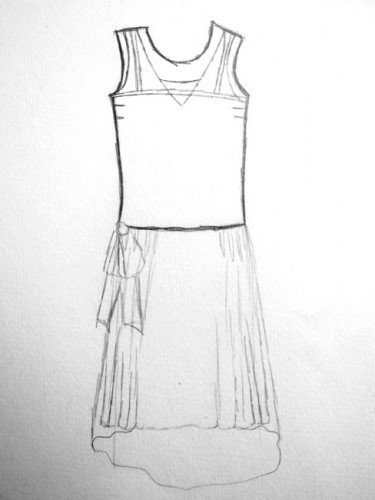
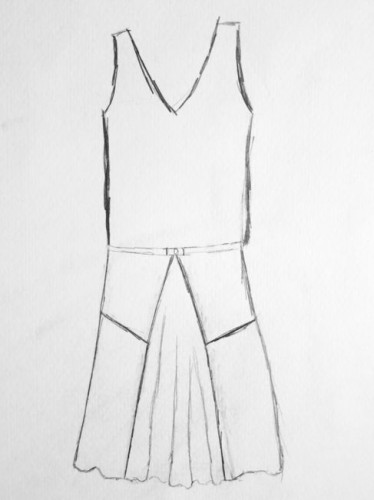
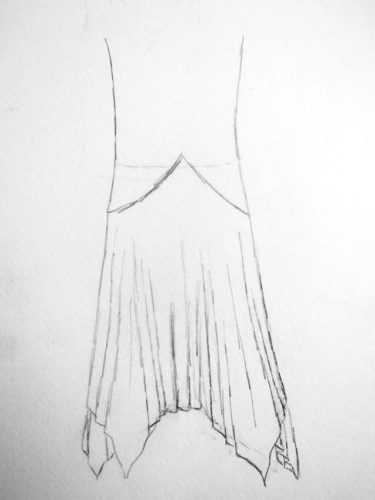
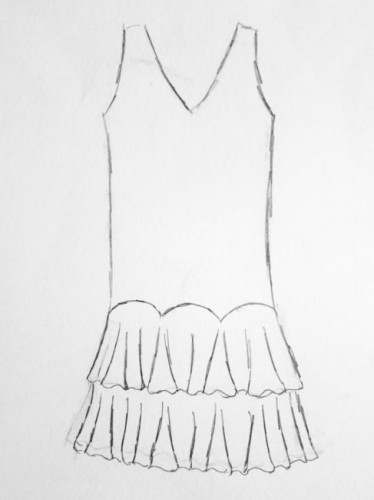
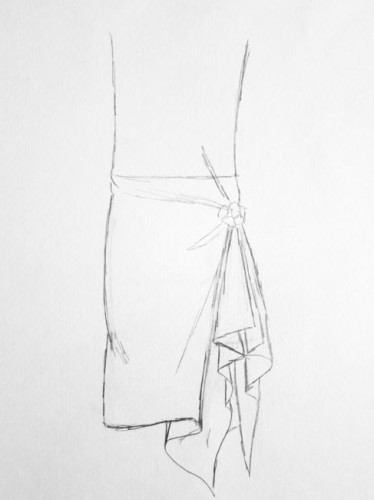

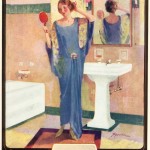
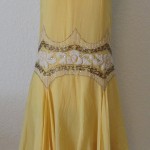
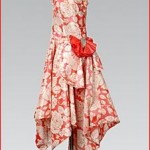
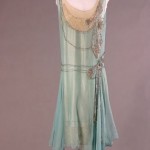
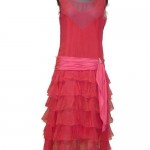

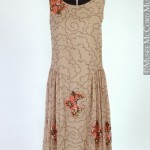
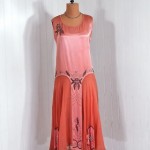

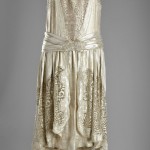
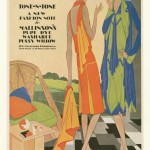

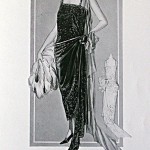
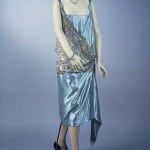
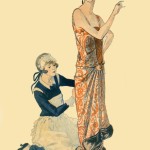
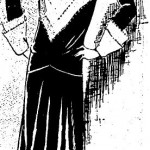

For Early Period, it’s even simpler. You only need particular measurements (neck, wrist, and bicep circumference, distance from shoulder to shoulder, distance around the widest part of the body, and distance from shoulder to desired hem) to cut out the correct shapes of triangles and rectangles.
I think a single, adaptable pattern for modern “period” looks is a great idea though.
OOooohh! How I wish I lived in Wellington so I could take that class! It would be neat if you could make the pattern downloadable online, and sell it, so we international folks can participate in the fun too. 🙂
[WORDPRESS HASHCASH] The poster sent us ‘0 which is not a hashcash value.
It’s funny, because I have been thinking something about this very idea while shopping for baby clothes (and maybe thinking of me and The Husband, too). It’s all about separates, nowadays, but the principle remains: How do you get maximum outfits, marrying color and proportion, out of a small amount of items?
Pattern-making always seemed like wizardry to me, but you make it easier to understand. Yet — there’s art to it, I’m sure. One thing you do is “reduce” it to geometry, and that’s a great connection. You probably know J. Gris’ paintings and Leger’s. From that Gatsby period, or just before. Do you know if French designers, especially were influenced by the Modernists? I know some did costumes.
Love the dresses you chose for this. So lovely and fun. The first of the model in the bathroom is hilarious — but, I suppose spiffy gleaming bathrooms w/salmon tile all ’round were most interesting then.
I love the yellow dress – that would be a great project for a special occasion.
-Rebecca
mn2nz.wordpress.com